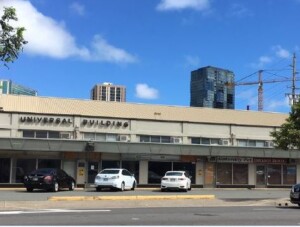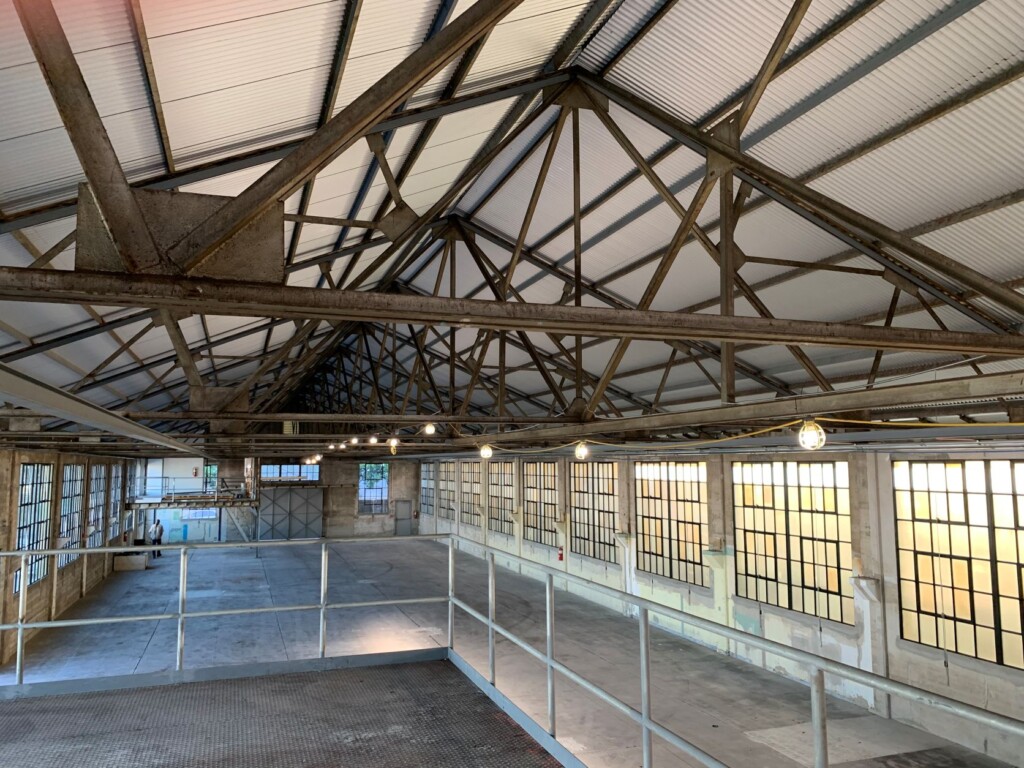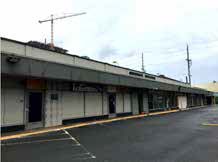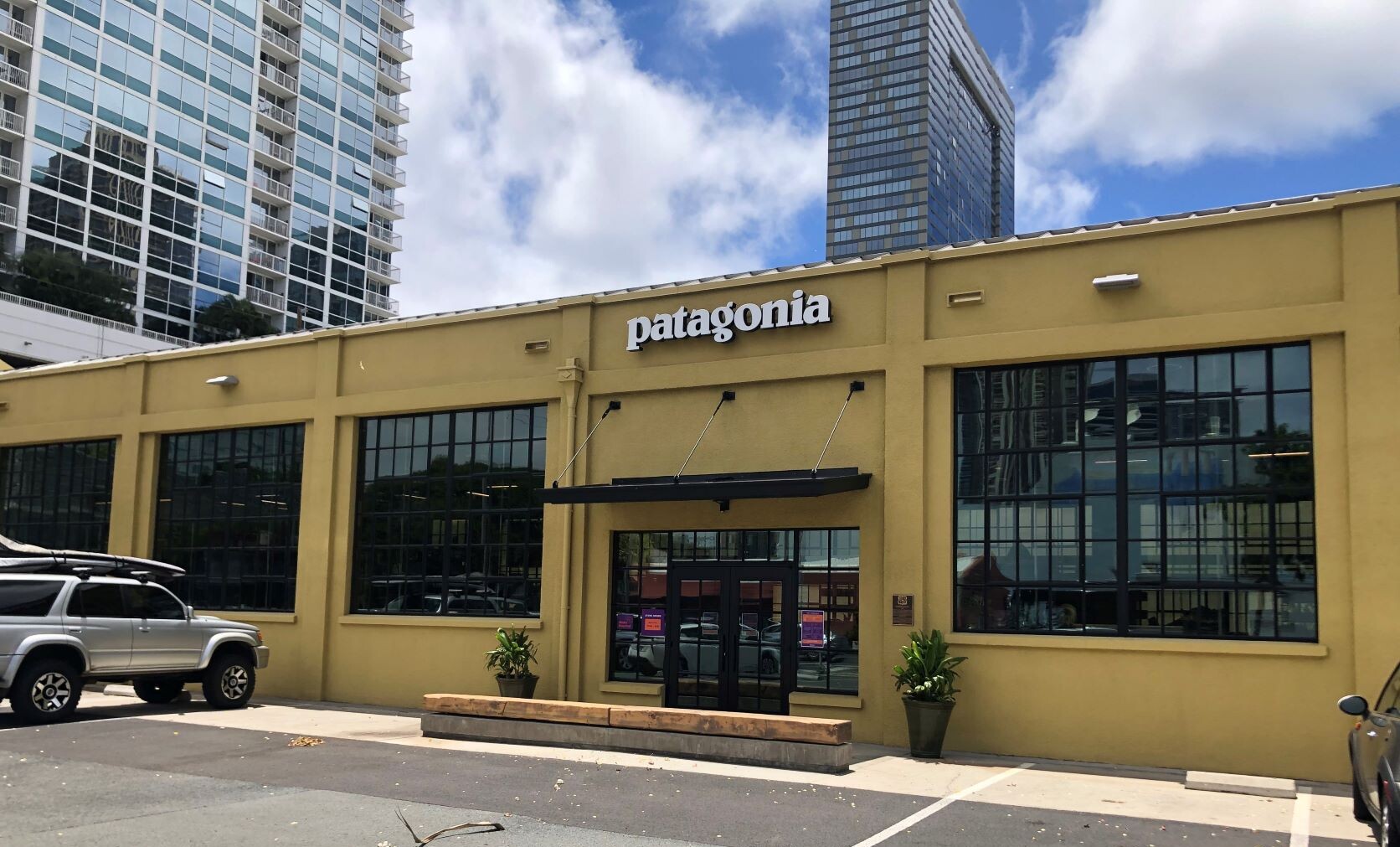Historic Universal Building/Dearborn Project
An unexpected discovery leads to the revitalization of a prominent building in Kaka‘ako and a new easement promises its preservation in perpetuity.
By Sara Lin and Francine Murray, Hawai‘i Community Development Authority

The altered façade with the attached retail fronts of the Universal Building.
In architecture, the fenestration, or placement of the windows, doors and skylights greatly affect the look, feel and function of a building or structure.
“We were all surprised to learn that many of the original glass windows were still there, hidden behind interior walls or framing,” said Kiersten Faulkner of Historic Hawai‘i Foundation (HHF) about the Universal Building on Ward Avenue.
In 2018, an application was submitted to HCDA, requesting to renovate and restore the historic Building to its original grandeur – the 1928 Dearborn Chemical Company Warehouse.
“The project was able to refurbish and restore the original fenestration and window patterns, bringing natural light and openness to the space,” said Faulkner. “The historic windows were also used as the pattern for replica windows and fenestration when they restored the Ward Avenue façade that had been covered with an addition in the 1960s. The windows are the light and soul of the building.”

The rehabilitated windows vastly improved the look and feel of the interior space; photo courtesy Dearborn LLC
In 2018, the project’s historic architect contacted HHF to let them know that the building had been purchased by an owner interested in and committed to preserving the property.
“HHF agreed to accept the preservation easement and to review any modifications for consistency with preservation standards,” Faulkner explained. “Preservation easements are a tool to ensure that the historic building, site, and features are preserved in perpetuity. Similar to conservation easements, the owner severs certain property rights, including the right to demolish or develop the site, and grants those property rights to a qualified organization. The preservation easement is recorded against the deed and gives Historic Hawai‘i Foundation the right and responsibility to ensure that the historic characteristics are preserved and maintained in perpetuity.”
The owner retains all other rights, including access, use and enjoyment.
The owner also retains responsibility for maintenance, compliance with codes, and liability, in perpetuity. The easement runs with the land and is binding on all future owners, and on the easement holder (HHF) and any of its future assignees.
There are both federal and local tax incentive programs to assist historic property owners with the costs of preservation.
“The federal historic rehabilitation tax credit can be applied to offset up to 20% of the design and construction costs for the restoration of the historic characteristics and features,” Faulkner explained. “This also ensures that the preservation work complies with preservation standards and is done correctly. The City & County of Honolulu offers a 50% reduction on property taxes for historic commercial buildings that are dedicated for preservation. The program requires a 10-year maintenance plan that ensures the historic features are retained and kept in good condition.”
Because of the specific nature and use of the property itself, every historic preservation project is unique. Fortunately, there are best practices and many supportive programs that provide resources and methodologies for success. “The zoning, building, accessibility and energy codes all acknowledge the difference between reusing existing buildings versus new construction,” said Faulkner. “There are sections of the codes that are supportive of preservation and reuse.”
Regarding the Dearborn project, “it was decided to restore the building after seeing all of the high rises being built in the area,” said Jenna Wells, the owner’s representative. “The goal was always to save the building but the restoration work to return the building to its original footprint came about by wanting to save the parking spaces and the only way to do so was to eliminate the front addition. From there, every decision became easy—what was in the building originally? For example, the back chicken wire glass windows were replaced one for one with like windows, the paint color was determined by finding the original color under layers of paint.”

Before Photo; HCDA Archives.

After Photo; HCDA Archives.
“Adaptive reuse and preservation of historic buildings have been used successfully in other communities in Hawai‘i,” said Faulkner. “One of the largest recent development projects was the Kunia Villages Historic District, which provided affordable farm worker housing for agricultural projects by rehabilitating 45 pineapple plantation era homes. We’ve also seen wonderful projects in Chinatown and Merchant Street historic districts, as well as in Hale‘iwa and ‘Ewa Villages special districts on O‘ahu.”
“Ultimately, the choice is about place-making and the type of community we want.
Historic Hawai‘i Foundation maintains that to achieve a district with a high quality of life, desirable to both residents and visitors, it is imperative to preserve buildings that provide human scale and historic value. These resources add to the richness of the urban environment. This provides a vibrant mix that results from retaining historic districts and structures while adding contemporary, well-designed buildings and public spaces.” – Kiersten Faulkner, Esecutive Director, Historic Hawai‘i Foundation
This article was originally published in the June 2022 issue of Hawai‘i Community Development Authority’s newsletter, Community Connection and is republished with permission. Photos from HHF’s collection were added for visual enhancement.


